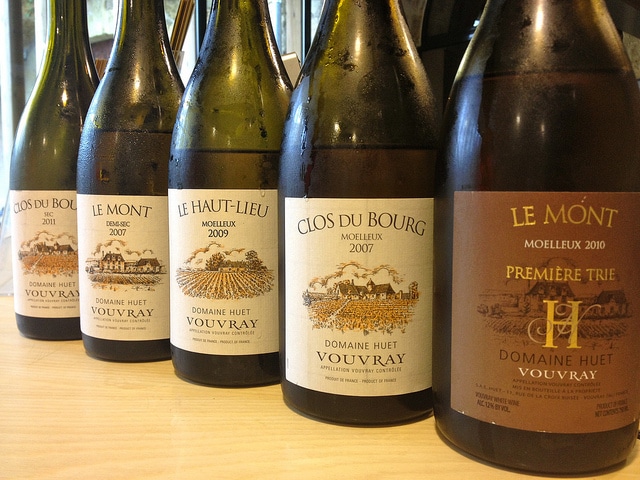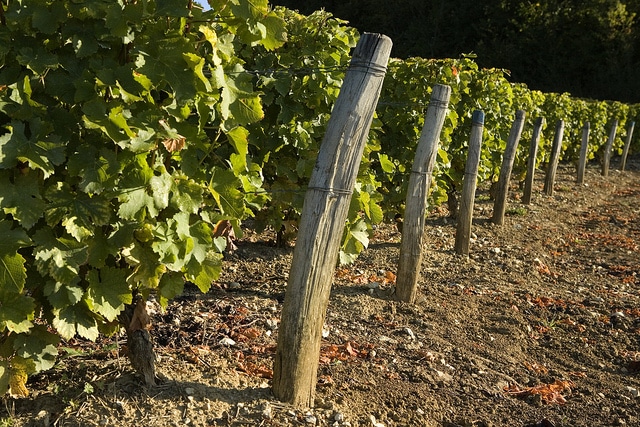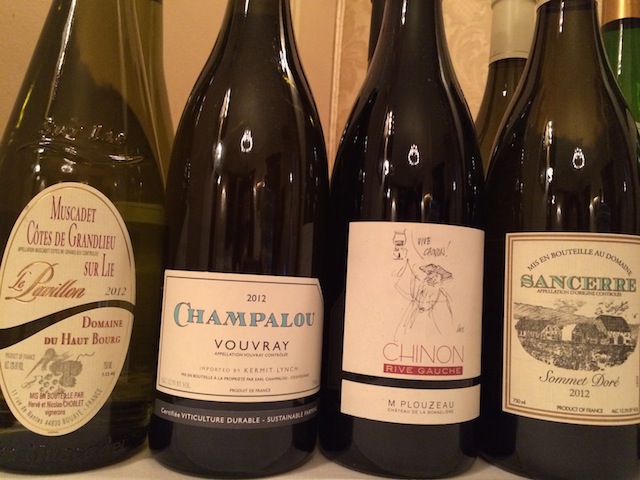
The Loire Valley, specifically Sancerre. Photo courtesy of Jean-Pierre.
No education in wine would be complete without learning about France’s Loire Valley. The Loire Valley is composed of a number of different wine regions within the wine region, each home to its unique unique climate and terroir, as well as grapes. Within these regions, 69 distinct appellations dictate which grapes can be grown where and what methods should be used to make the wine.
While you’ll find much diversity in the landscape, one thing you can almost always count on is that a Loire Valley wine will be light and fresh, as well as lower in alcohol content due to the cooler climate. And because cooler climates tend to produce lighter, more acidic wines — warmer climates ripen fruit more easily, leading to higher sugar contents — whites are popular here, as acid is important in giving whites their zest and crispness on the palate.

The beginnings of Muscadet. Photo courtesy of Jameson Fink.
Nantais
One of the wine regions you’ll find within the Loire Valley is Nantais, which is renowned for its dry, light-bodied white Muscadet wine. All Muscadet comes from the Melon de Bourgogne grape — which used to be known as Muscadet — and due to the terroir near the Atlantic Ocean has an rocky yet briny aroma and taste. This wine is meant to be drank young, and its refreshing nature lends itself well as an accompaniment to seafood.
Sometimes, the Melon de Bourgogne grape is made into Muscadet Sur Lie (lie means lees in French), meaning the liquid was left on the lees — or sediment of dead yeast and residual sugar — to give the wine a fuller body and, not surprisingly, a slightly yeasty essence (just make sure when tasting you don’t use the word yeast, but instead descriptions like brioche and just-baked bread). This is the style of wine you’ll typically find in Sevre-et-Maine, an appellation encompassing 20,305 acres (8,217 hectares) that accounts for 80% of all Muscadets.

Wine grapes. Photo courtesy of Otto Phokus.
Anjou-Samur
While Champagne is only made in Champagne, France, Anjou-Samur is known for having the most important sparkling wine outside of Champagne. According to Ms. Frederick, the grapes you’ll find here include Chenin Blanc, Cabernet Blanc, Cabernet Franc, Gamay, Malbec and Grolleau. Chenin Blanc is particularly popular in this region, creating a wine that’s naturally tart and high in acid, characterized by notes of tropical fruit and honey. And while the best Chenin Blanc wines from this region are sweet, you’ll also find some decent dry varieties.
In terms of reds, Cabernet Franc is the focus, and no trip to the region would be complete without sampling the Cabernet d’Anjou, a high-quality, fruit-forward wine composed of Cabernet Franc and Cabernet Sauvignon that has strong tannins, fresh red fruit aromas, and a slight white pepper on the finish.

Vouvray. Photo courtesy of Megan Mallen.
Touraine
Touraine is another appellation in the Loire Valley, covering the entire district of Touraine. Here you’ll find a large spectrum of wines, from dry, fruity reds to complex whites that excite the palate (whites make up about 50% of the wines from Touraine).
Here they use a large variety of grapes: Gamay, Sauvignon Franc, Cabernet Franc and Chenin Blanc. In the Loire Valley, the most important red wine you’ll find is from Touraine and is the Chinon appellation, which is surprisingly different from its neighbors — so much so that it’s sometimes grouped separately from Touraine along with Bourgueil.
Chinon is known for being one of the few Loire appellations to produce mainly reds — from Cabernet Franc — with these wines being typically dry and light to medium bodied with spiced fruit flavors and a crisp acidity. Also notable from Touraine is Vouvray, a white wine crafted from Chenin Blanc that can range from dry to sweet and usually has notes of quince, rose, apricot and honey depending on its maturity.

Sancerre vineyards. Photo courtesy of Craig Drollett.
The Central Vineyards
In the Central Vineyards of the Loire Valley — which aren’t all actually in the center of the region — you’ll find a focus on Sauvignon Blanc and Pinot Noir — as well as some of the world’s trendiest wines, including Sancerre (made with Sauvignon Blanc and Pinot Noir) and Pouilly-Fume (made with Sauvignon Blanc). While Sancerre is a bit more in vogue than the Pouilly-Fume — as well as more expensive — both have similar characteristics, including being crisp, herbacious and having a slight tang of cat pee. Yes, you read that right.
Before you start gagging, that scent is attributed with under ripe/cool climate Sauvignon Blanc grapes. And while bathroom words are typically avoided when describing wines — especially esteemed ones — cat’s pee is an acceptable term in the world of vino.

Loire Valley wines we tasted during class. Photo courtesy of BettyPallis.

Jessica Festa is the editor of the travel sites Jessie on a Journey (http://jessieonajourney.com) and Epicure & Culture (http://epicureandculture.com). Along with blogging at We Blog The World, her byline has appeared in publications like Huffington Post, Gadling, Fodor’s, Travel + Escape, Matador, Viator, The Culture-Ist and many others. After getting her BA/MA in Communication from the State University of New York at Albany, she realized she wasn’t really to stop backpacking and made travel her full time job. Some of her most memorable experiences include studying abroad in Sydney, teaching English in Thailand, doing orphanage work in Ghana, hiking her way through South America and traveling solo through Europe. She has a passion for backpacking, adventure, hiking, wine and getting off the beaten path.








